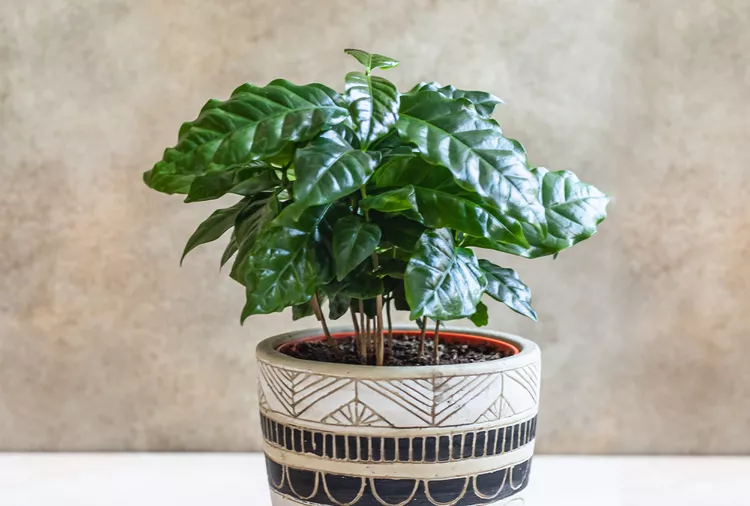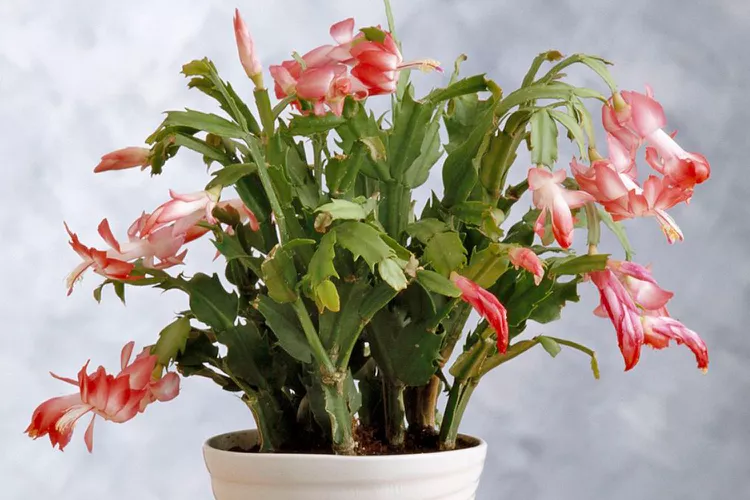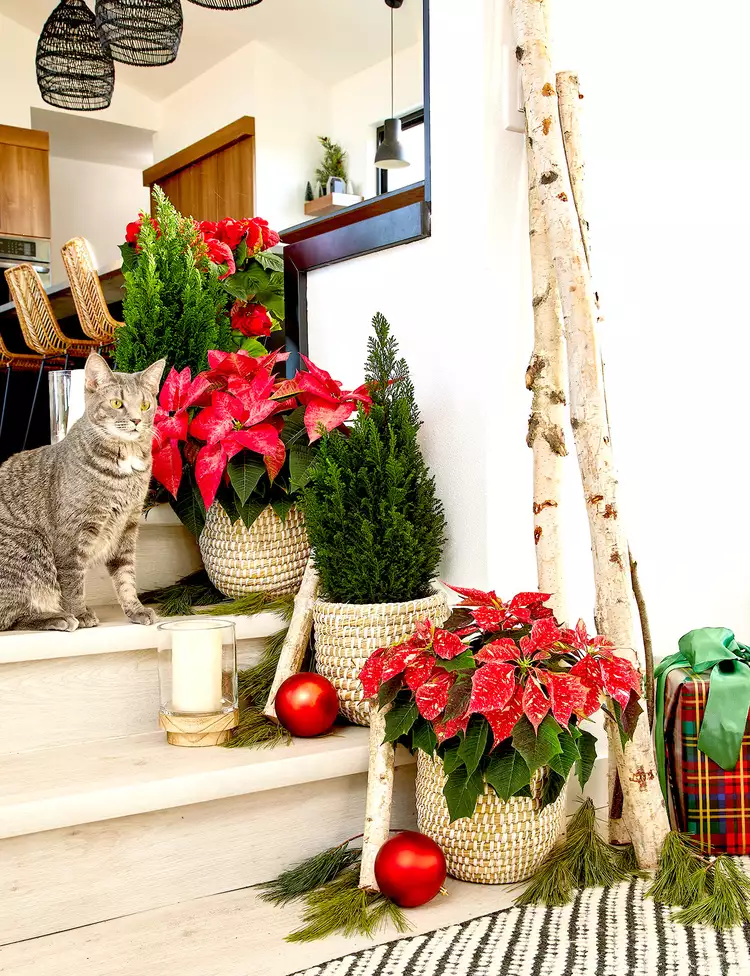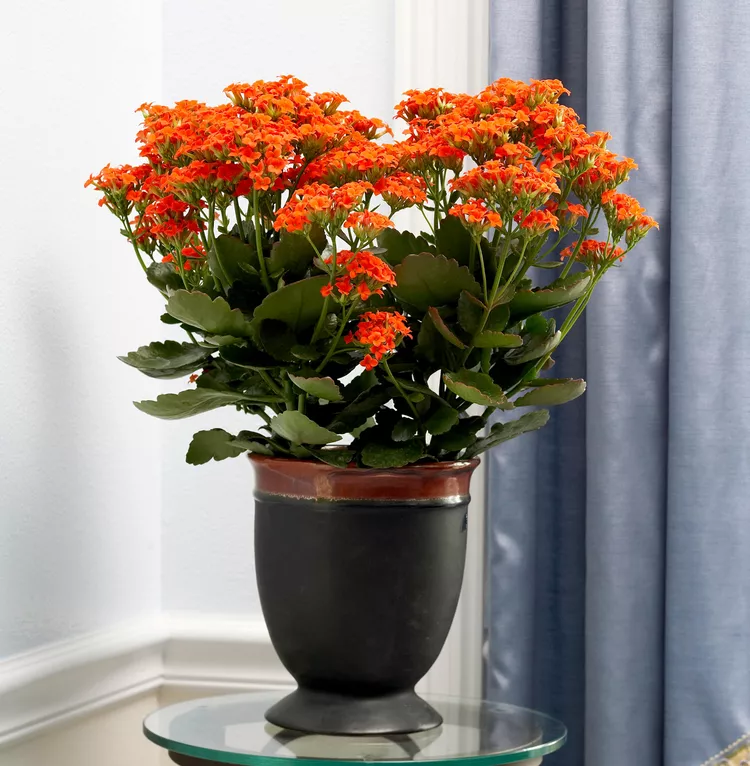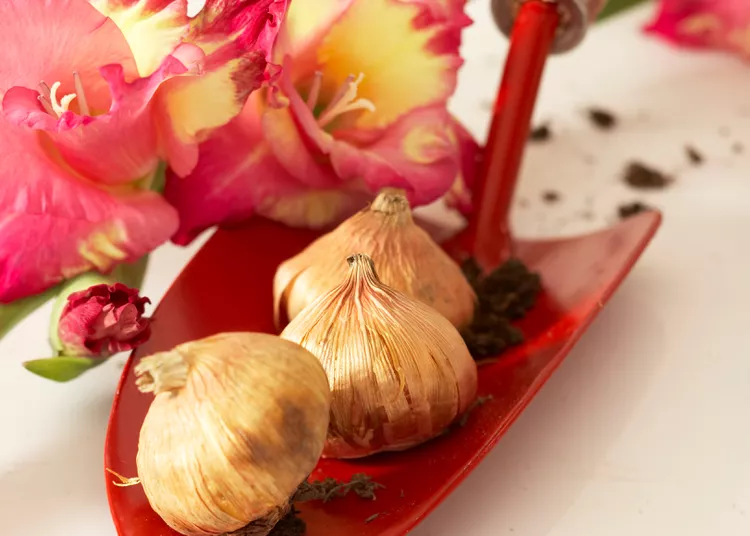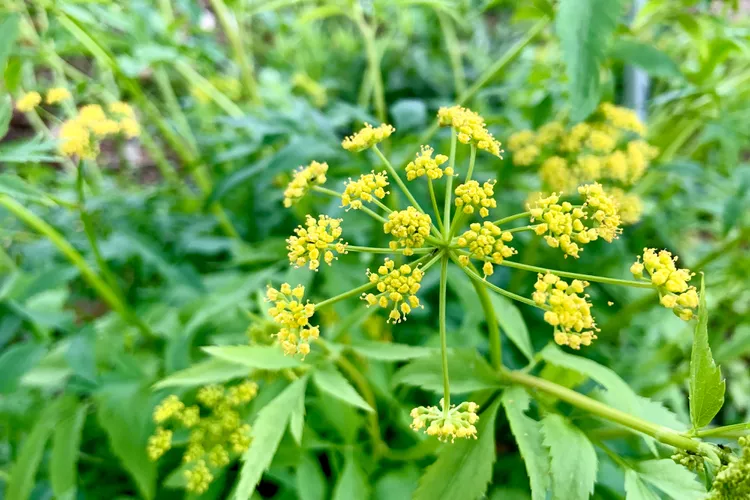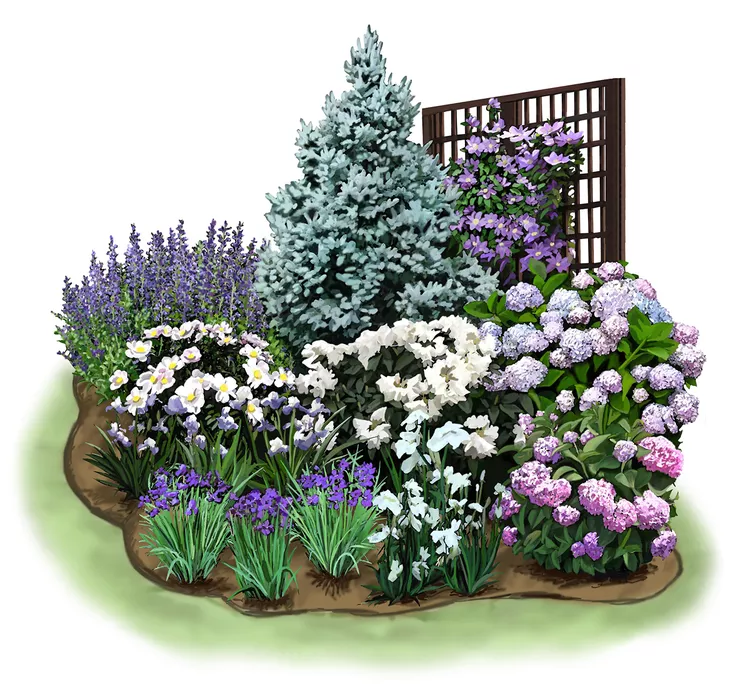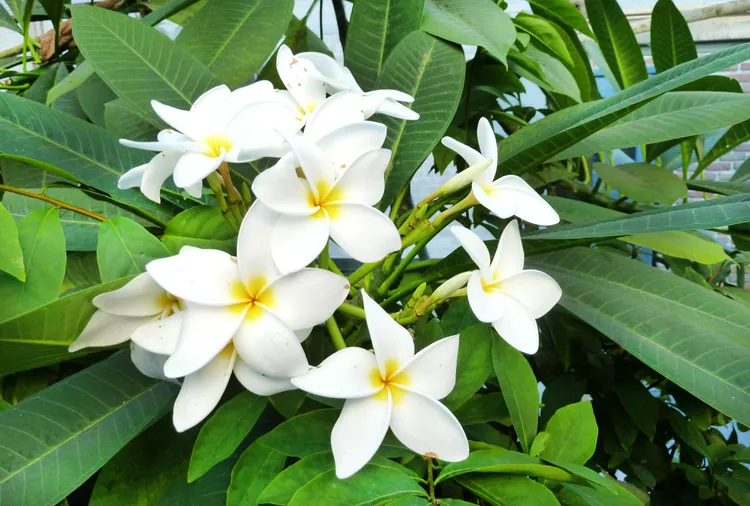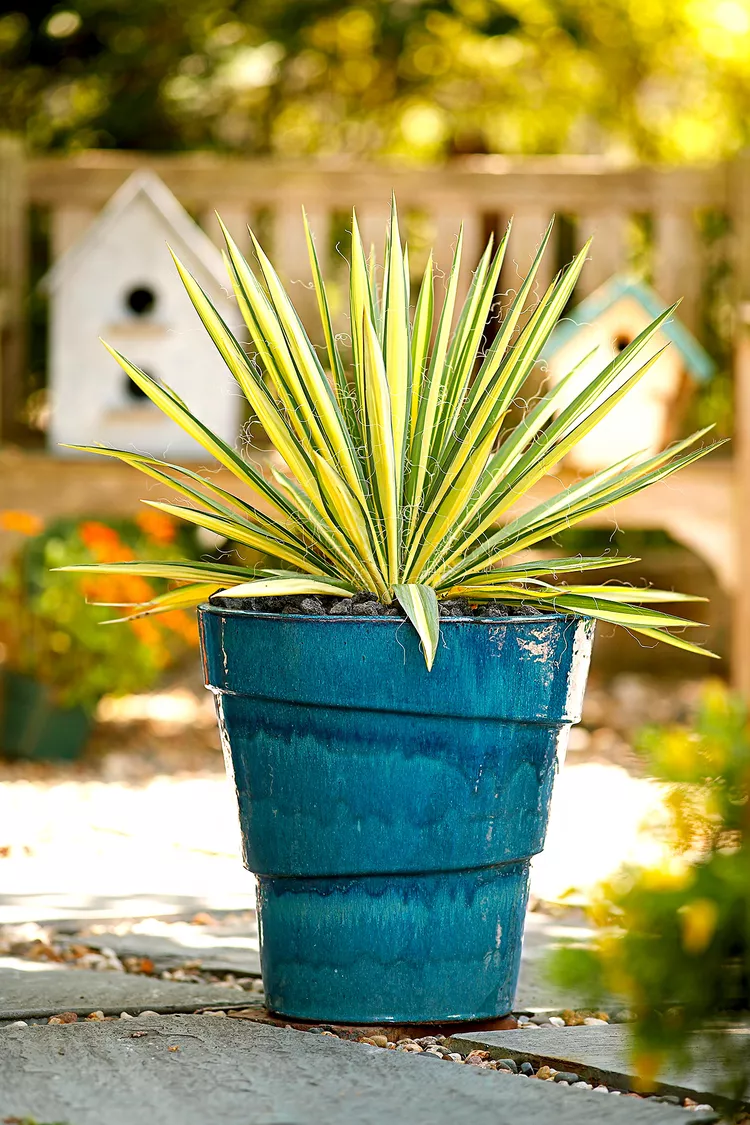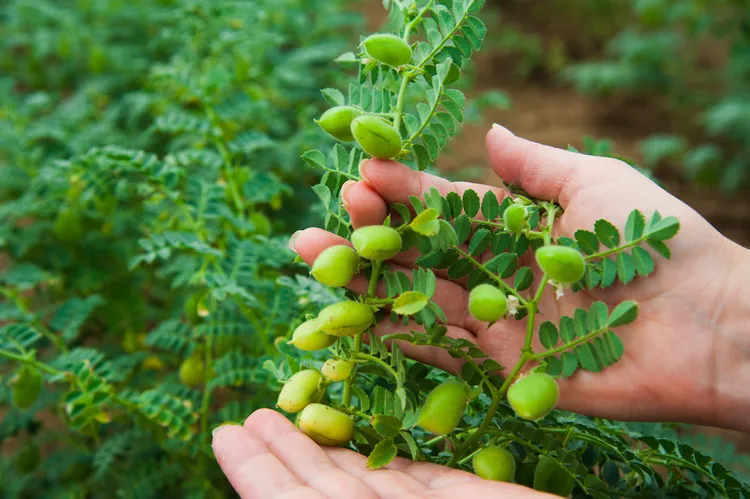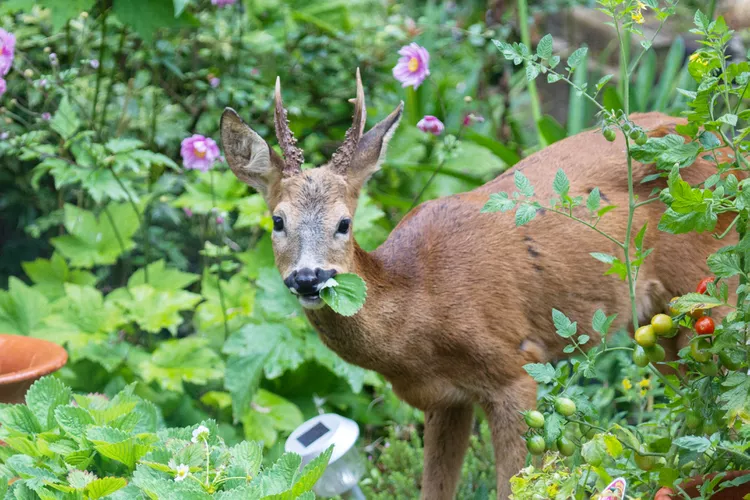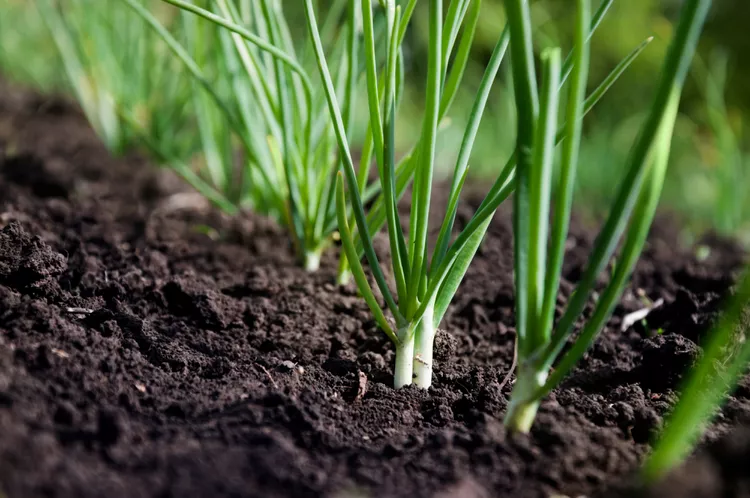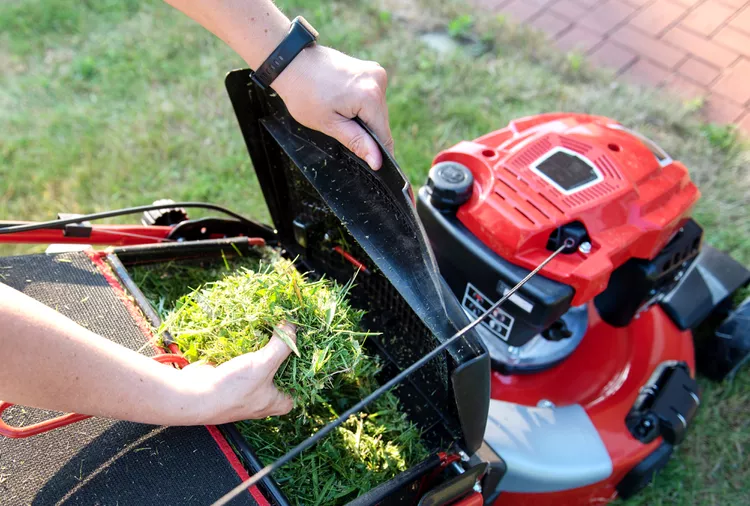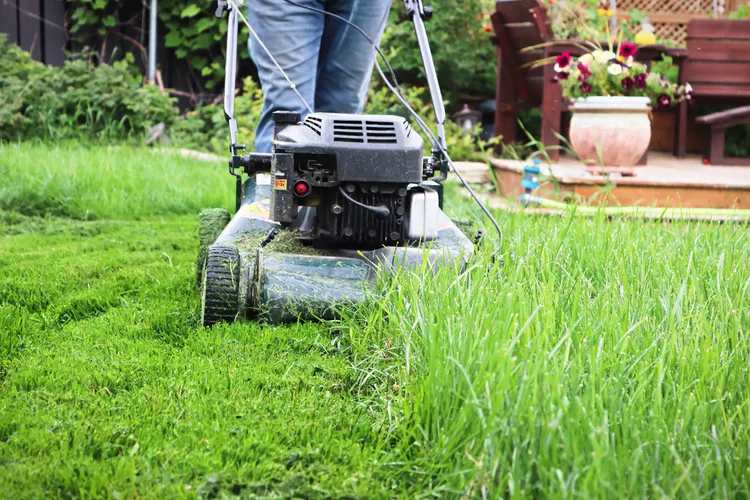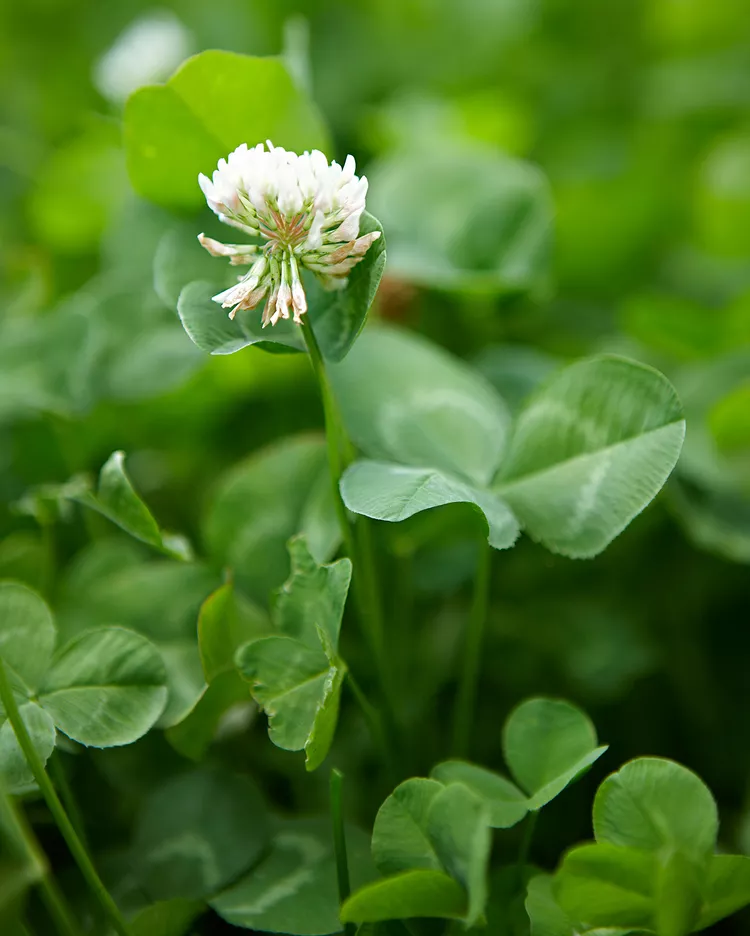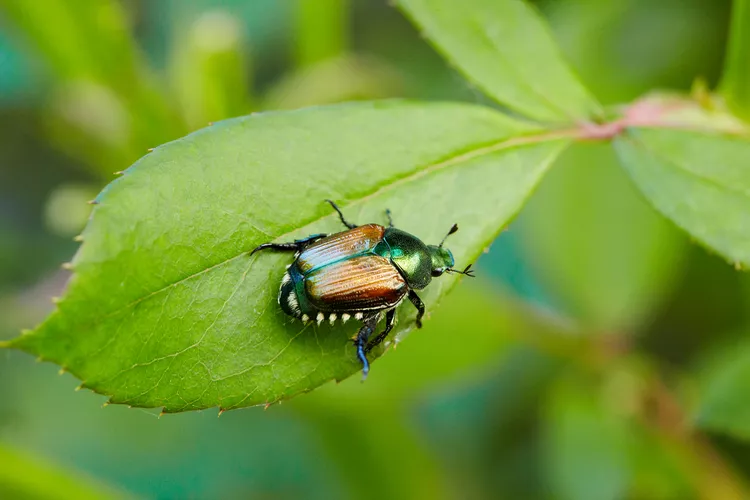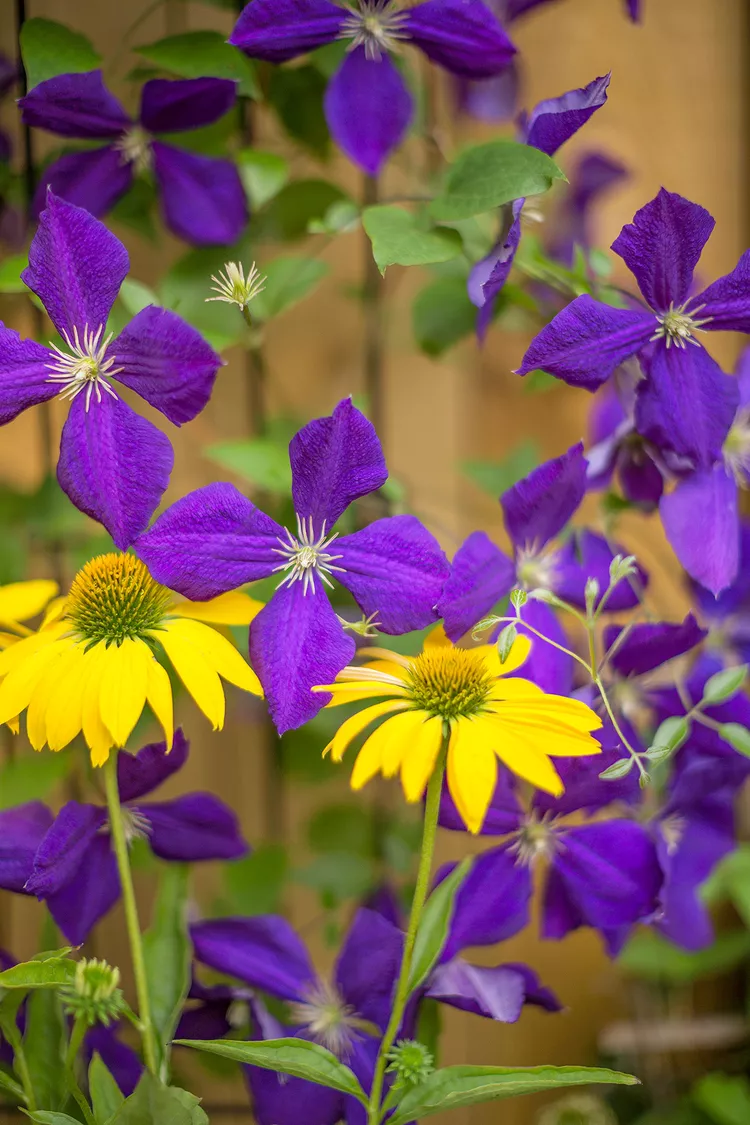Which flowering plants go together? There's certainly an art to combining annuals, perennials, shrubs, vines, and more to create a gorgeous and harmonious garden. Not only do you need to consider contrasting and complementary colors, season of bloom, and flower shape, but also care needs of your plant selections. Use these winning combinations and time-tested design tips to fill your landscape with flowers that work exceptionally well together.
Add Early Spring Color
Get an early start on spring with a generous helping of bulbs that pop into bloom just as winter starts to fade. Here, the cheerful yellow flowers of 'Little Gem' daffodils combine beautifully with blue Chionodoxa. Plant both in the fall for spring flowers. Both grow in full sun or part shade and need well-drained soil (steer clear of wet soil or the bulbs will rot). Both are hardy in Zones 3-8.
Try Something Different
Just because you might not have heard of a plant before doesn't necessarily mean it's hard to grow. Take Fritillaria for example. This gorgeous spring-flowering bulb isn't as well known as tulips or daffodils, but its striking blooms come in a variety of sizes and colors that pair well with more common bulbs. Here, Fritillaria persica, or Persian lily, adds extra interest to a bed of red tulips. Plant in full sun or part shade and well-drained soil. Both are hardy in Zones 4-8, and can reach up to 3 feet tall.
Mix Herbs and Flowers
Create a colorful and fragrant spring garden by mixing flowering herbs and perennials that bloom together in May and June. In this border, chives and lavender bloom in front of Amsonia, bearded iris, and peony. The variety of heights helps make this garden bed for full sun look full and lush, especially during late spring when everything is in bloom.
Use Roses Generously
Roses, particularly shrub and landscape varieties, blend well with annuals or perennials from spring to fall. In this garden, a bright pink shrub rose is a good partner to purplish-blue Siberian iris. The difference in foliage makes for good contrast. Both like full sun and well-drained soil, and are hardy in Zones 5-9 (shrub roses can be hardy up to Zone 3).
Rely on Annuals
Hot, sunny conditions are no problem for annuals such as petunia and pentas. These two plants are super easy to grow and will bloom nonstop from May to September in containers or borders. They both also attract bees and butterflies. Give them a spot in full sun with well-drained soil, and they'll add color to your garden all summer.
Raise the Flag
Who can resist a red, white, and blue garden? This flower-packed fence line contains just three varieties, so it's easy to duplicate the look. Surround 'Scarlet' Flower Carpet roses with white sweet alyssum and dark blue lobelia. Plant in full sun and well-drained soil, and this trio will bloom through the fourth of July.
Go Tropical
You don't need to live near the equator to enjoy the beauty of tropical plants. As long as the temperatures are hot and humid, tropical plants will reward you with colorful foliage and flowers all summer long. This grouping includes Alocasia, coleus, impatiens, and Cuphea. Unless you live in the southernmost parts of the U.S. (including Florida and Texas), many tropical plants will just be annuals, but they can still thrive for the summer in your garden.
Brighten the Shade
Shady spots in your garden don't have to be barren and boring. There's a host of shade-dwelling annuals and perennials that will add instant impact to any location. Here, a carpet of bright green sweet woodruff fronts a bed of Japanese hakone grass and a cluster of blue- and chartreuse-leaf hosta varieties. The hostas and sweet woodruff also add blooms to this arrangement.
Woodland Pairing
With their fernlike foliage and lovely, lacy spires of blossoms in shades of white, pink, red, and purple, shade-loving astilbes make the perfect foil for additional beds filled with hosta. In fact, astilbe (sometimes called false spirea) and hosta are two of the very best shade-garden companions. They look absolutely wonderful mass-planted together in slightly shady locations, especially with variegated foliage and different hues of flowers. Working together, they can add color and bright foliage to areas of your yard with well-drained soil and part sun or part shade. Plus, both are hardy in Zones 4-8 (hostas can survive in Zones 3-9).
Mix Flower Shapes
Add interest to your summer garden by mixing flowers with different shapes together. For example, here the wide, trumpet-shaped blooms of 'Stella d'Oro' daylily mingle beautifully with the dainty white flower stalks of 'Husker Red' penstemon. The result looks like a living bouquet.
Choose Your Favorite Colors
Having a beautiful garden in the early summer doesn't mean you have to plant a rainbow of colors. Instead, make a bigger impression by sticking with different versions of the same color. For example, only five species that flower in shades of blue, purple, and lavender were included in these narrow borders. Delphinium, foxglove, allium, agapanthus, and sea lavender are a blue ribbon combination.
Pairing Purples
This spring bed is full of textures and contrasts within a purple color theme. Bearded irises, amsonia, and catmint all bloom around the same time so they make excellent perennial companions. Incorporating something unexpected into the design, such as edible chives, adds interest.
Include Hydrangeas
Most hydrangeas bloom from midsummer to fall, making them ideal partners for mixed flower borders. In this garden, a large 'Annabelle' hydrangea anchors a border packed with perennials and annuals. Other flowers here include begonia, sweet alyssum, Oxalis, phlox, sedum, Lythrum, Torenia, and marigold.
Shady Hydrangea Combo
An empty, shade-filled spot can be the perfect place to play up the contrast in color and foliage between just a few types of plants. Here, delicate blue lacecap hydrangea pairs with the full blooms of 'Endless Summer', and is complemented by the brightening effect of golden Japanese forestgrass.
Mix Shrubs and Flowers
Make shrubs the backbone of your flower border. They add color and structure to your garden even when everything else is not in bloom. There are also a wide variety of colors to choose from. In this border, the yellow flowers of perennial Heliopsis helianthoides, commonly called ox-eye daisy, are the perfect summer complement to the foliage of dwarf golden privet.
Keep Butterflies in Mind
Butterflies, bees, and other pollinators will flock to your yard when you include a generous supply of nectar-rich flowers in your garden. These creatures are active from spring to fall but are busiest in late summer when the temperatures heat up. Two butterfly favorites include yellow black-eyed Susan and purple ageratum.
Add Edible Varieties
Want a garden that's both colorful and delicious? Then tuck brightly colored vegetables alongside your annual and perennial flowers. In this bed, wide swaths of ruffled, chartreuse 'Black-seeded Simpson' lettuce weave in and out patches of blue viola that are also edible.
Increase the Color
Double your pleasure by selecting variegated plants with colorful stripes, blotches, or margins. Variegated iris (Iris palida 'Variegata'), for example, provides a vertical accent of green-and-white striped leaves from spring to fall. Here, it's paired with the Russian sage that develops clouds of blue flowers in late summer and fall.
Plan for Drought
Sooner or later every part of the country is subject to periods of drought. To prepare for the worst and still have a colorful garden, choose plants that thrive when it's dry. This colorful bed includes anise hyssop and creeping sedum, both of which grow and bloom even when rainfall is scarce.
Keep It Simple
Creating a colorful border can be super easy when you plant different colors of the same species together. Here for example, a mixture of flowering cabbages was all that was needed to give this fall border a big boost of color.
Pair Annuals and Herbs
Never underestimate herbs. These fragrant and colorful plants mix well with annuals, perennials, and roses. In this simple bed, tricolor sage and pale pink sweet alyssum make a gorgeous team at the edge of a path or walkway.
Try the Classics
You can always depend on the classics, especially if you're a new gardener looking for easy-to-grow annual flowers that provide instant gratification. Marigolds and zinnias, for example, have both been around for generations and still deserve a prominent spot in beds, borders, and containers.
Plant a Nonstop Flower Show
For all-season color, interplant annual flowers with reblooming varieties of perennials. The annuals will keep the garden colorful while the perennials come in and out of bloom. In this walkway border, annuals such as marigold, calendula, and zinnia are teamed with perennial coreopsis and daylily.
Winning Border Combo
A container of tender jasmine spills a heavenly fragrance from atop the stone wall of the back of this border. 'Sarah Bernhardy' and 'Karl Rosenfeld' peonies, Allium 'Globemaster', catmint (Nepeta x faassenii 'Six Hills Giant'), and lady's mantle put on a dazzling late-spring performance.
Think Vertically with Flowering Vines
Flower-covered vines are an excellent way to add color to blank vertical spaces such as fences and walls. You can make them look even more eye-catching by planting flowers in front of them that offer contrasting colors. Here, a yellow coneflower makes a vibrant pairing with a purple clematis.
Cover the Ground
The best way to keep weeds out of your garden is to plant groundcovers that spread quickly and smother potential invaders. Plus, they'll give your landscape an extra boost of color. This brilliant shade border is kept maintenance-free with a thick planting of silver-leaf Lamium and two varieties of hosta. In addition to their pretty foliage, these perennials also bloom.
Plan a Fall Finale
Your garden can be as cheerful and bright in the autumn as it is in the spring and summer. It's easy if you leave room for fall favorites. Here, viola, chrysanthemum, aster, dusty miller, and two varieties of kale fill a bed with color and texture.
Think Ahead
You don't have to stop enjoying your garden when winter comes. Just be sure to include some plants with sturdy flower stalks that will provide interest in the wintry landscape. For example, this border contains 'Autumn Joy' sedum and 'Hameln' fountain grass. Both bloom in the late fall and will hold their faded blooms all winter long.

